George “Burt” Martin
Helmets and Boots
What it was like being a doughboy!
Have you ever wondered what it was like being a member
of the American Expeditionary Forces in World War One?
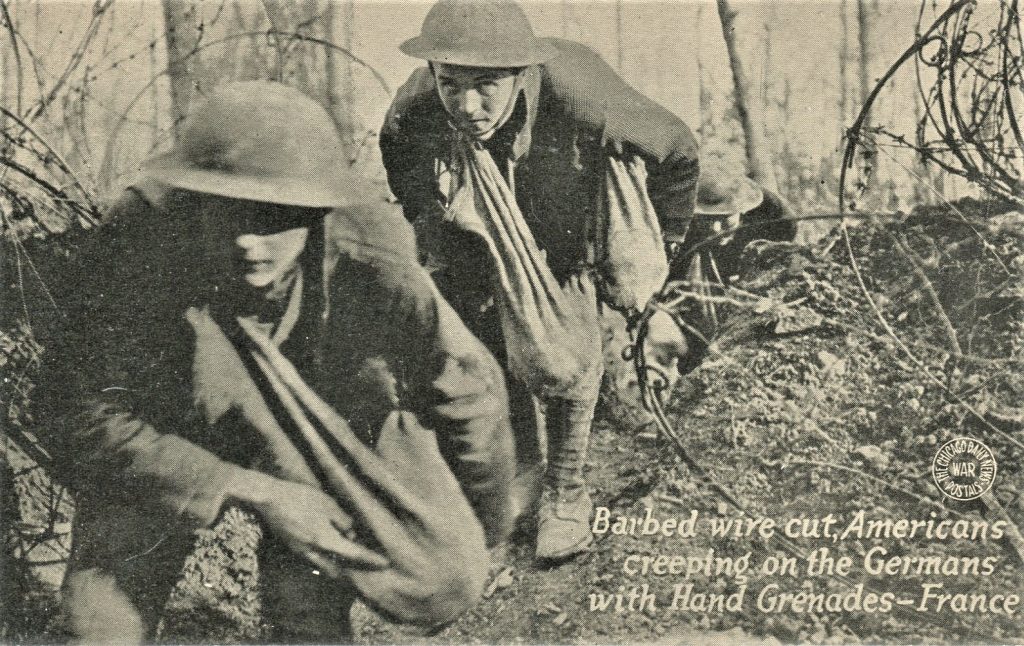
It is likely that it wasn’t the most comfortable time in a young man’s life. He could have been your great- (or 2d-) grandfather or your great- (or 2d-) uncle. From his head to his feet, the uniform was government issue. It was not meant to be Sunday best; it was meant to protect the man inside from the world outside.
Someplace or another most of us have worn or seen, touched, and smelled a military uniform in museums or perhaps in great grandfather’s closet or maybe on postcards. The shirts were wool. Wool was a durable fabric, especially after a worsted yarn was added to the thread count and woven in a twill pattern. (A twill pattern is a diagonal rib weave that has an absolute front and back; the front of the fabric is the “wale” and is always darker in color then the back. When woolen fabrics are manufactured in this manner it is nearly impossible to tear.
Wool by nature is warm, breathable, and flame resistant; it will char but does not melt nor burn.
The pants were also wool. The woolen fabric used in pants was an even higher thread count material. The seams of the seat, waist, and each leg had double needle flat felled seams. The belt was leather, one-inch to one-and-a quarter inches wide, double-ply.
Helmets were plain-carbon steel approximately three-eighths inch thick. (For a better understanding of the thickness, look at your daily newspaper and find two capital letters and one lowercase letter together, e.g., DeM, that would be 3/8” thick.) It weighed about a pound. The average helmet would have a brow-band riveted to straps crisscrossed at the crown to form a bowl. (See the helmets worn in the featured image above.)
Boots were leather, composite fabric, and steel. When an American soldier was issued his uniform, all parts totaled about 44 pounds.
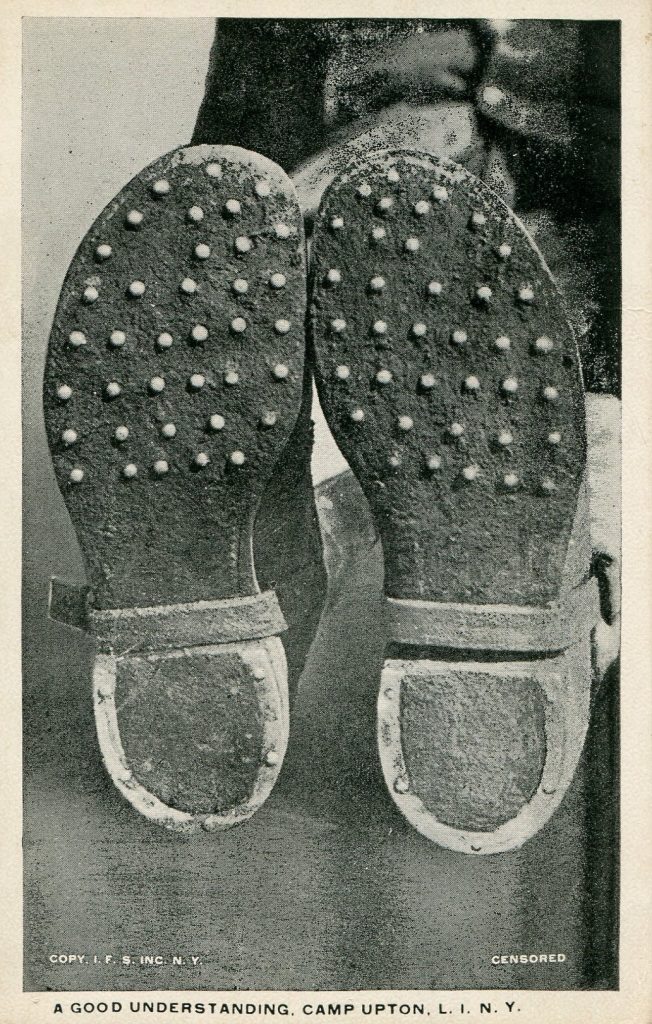
A Good Understanding, Camp Upton, L. I. N. Y.
The picture on this card is a pair of Pershing Field Shoes, circa 1918. The doughboys of the American Expeditionary Forces (AEF) called them “Little Tanks.”
“Tanks” because the soldiers reasoned, if their shoes came complete with hobnails, heel plates, and a half-moon shaped, iron toe cleat, that their feet were about as safe as possible. The official term for these 5½ pound shoes, from the quartermaster’s inventory description, was “Model 1918 Trench Boot.”
When discovered this card was one that caused some instant curiosity. If this card had a caption such as, “Camp Upton,” surely there is a good chance that others could be found with names of other military bases. To date the search has yielded cards from Camp Dix (New Jersey), Camp Devens (Massachusetts), Camp Meade (Maryland), and Camp Wadsworth (South Carolina). And a similar one, with a YMCA insignia instead of a “camp caption’’ has appeared in the Chicago Daily News War Postal series.
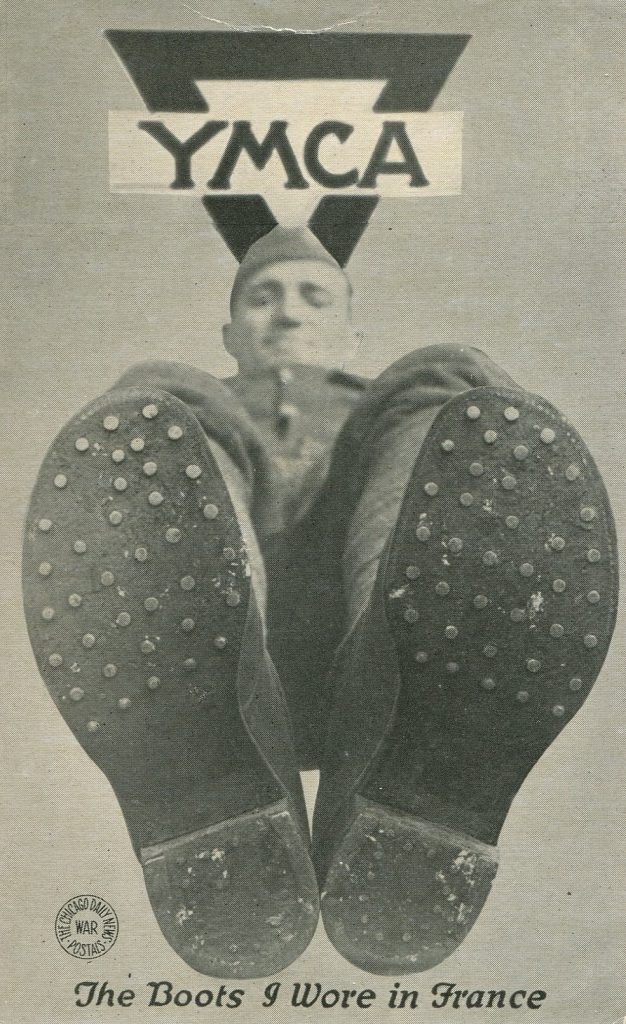
A Chicago Daily News War Postal
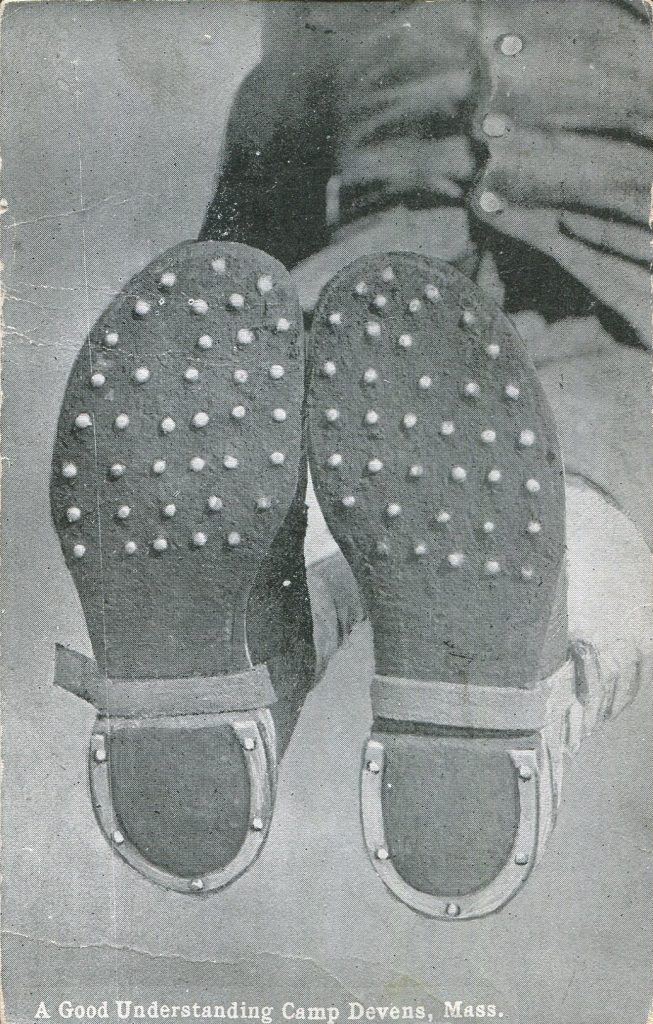
Camp Devens, Mass
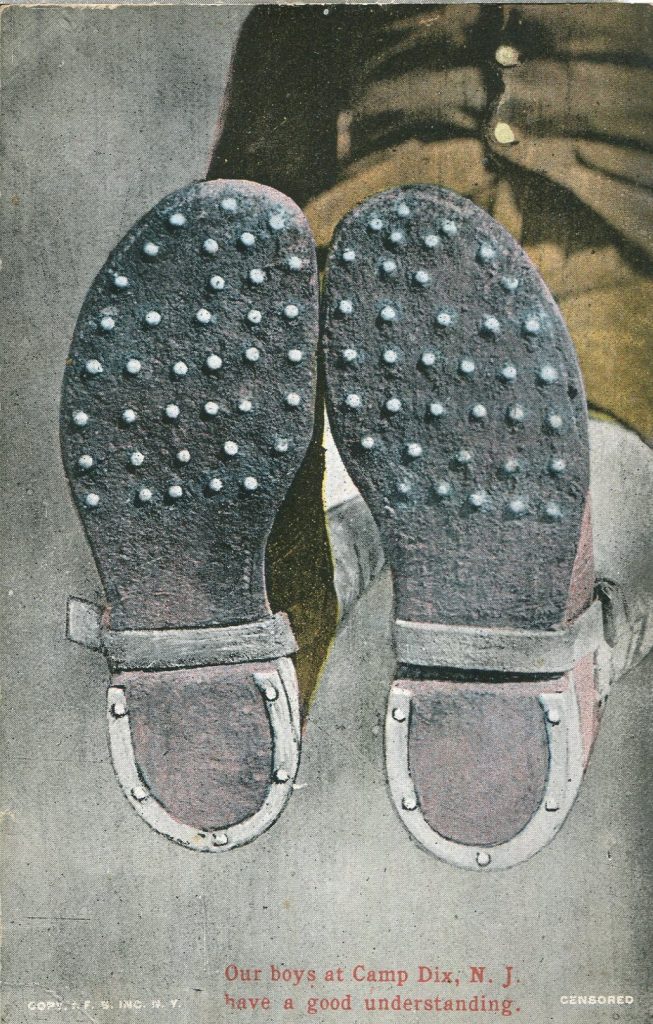
Camp Dix, N. J.
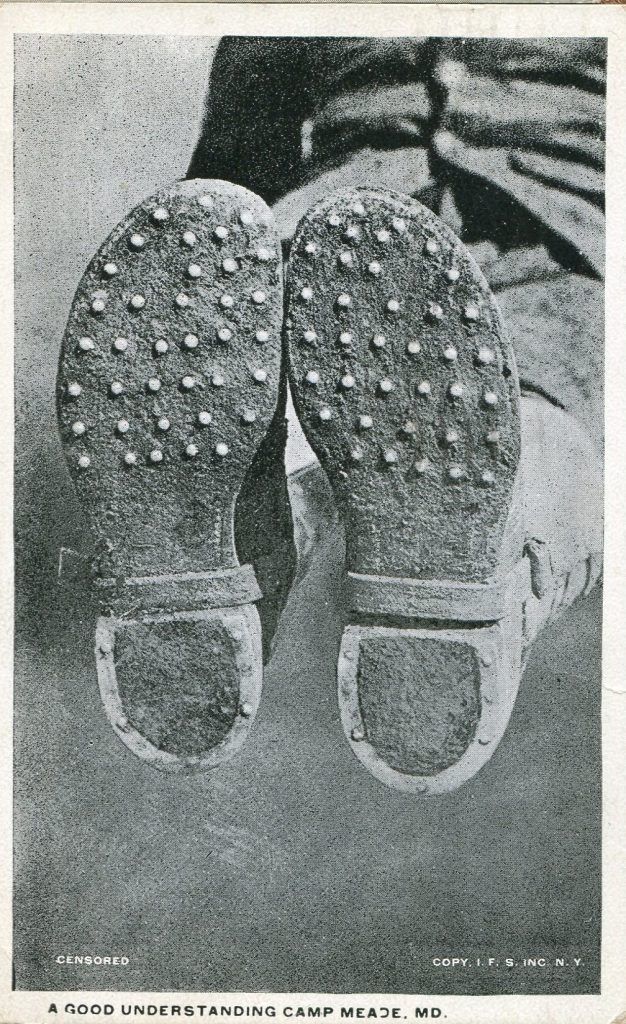
Camp Meade, Maryland
A good pair of boots is a vital part of a soldier’s equipment, but good boots weren’t always available. When the AEF headed for the French battlefields in 1917 it was soon evident that the Russet Marching Boot that were the standard equipment issue for the frontline American soldier would not withstand the wet and often muddy conditions of trench warfare in Europe.
New boots were designed to withstand the dampness and because of the new methods used to affix the sole to the uppers (using glue, nails, and screws) and the practice of triple stitching the backstays some success was achieved, but it did not come easily. To better understand the frustration associated with finding the perfect trench boot, it may help to know that there were at least nine different recommended specification changes to these shoes between May 1917 and August 1918.
* * *
For those who are interested, a rather detailed history of World War One military equipment may be found at http://www.worldwar1.com.
* * *
At some point in time, we will examine other parts of the American military uniform. Militaria from the Revolutionary War to Afghanistan are widespread collectibles. Headwear is the most popular; dress hats first and then comes the overseas cap (often called a garrison cover) that replaced the Montana Campaign hats worn until 1917. A topic for a future Postcard History lesson.
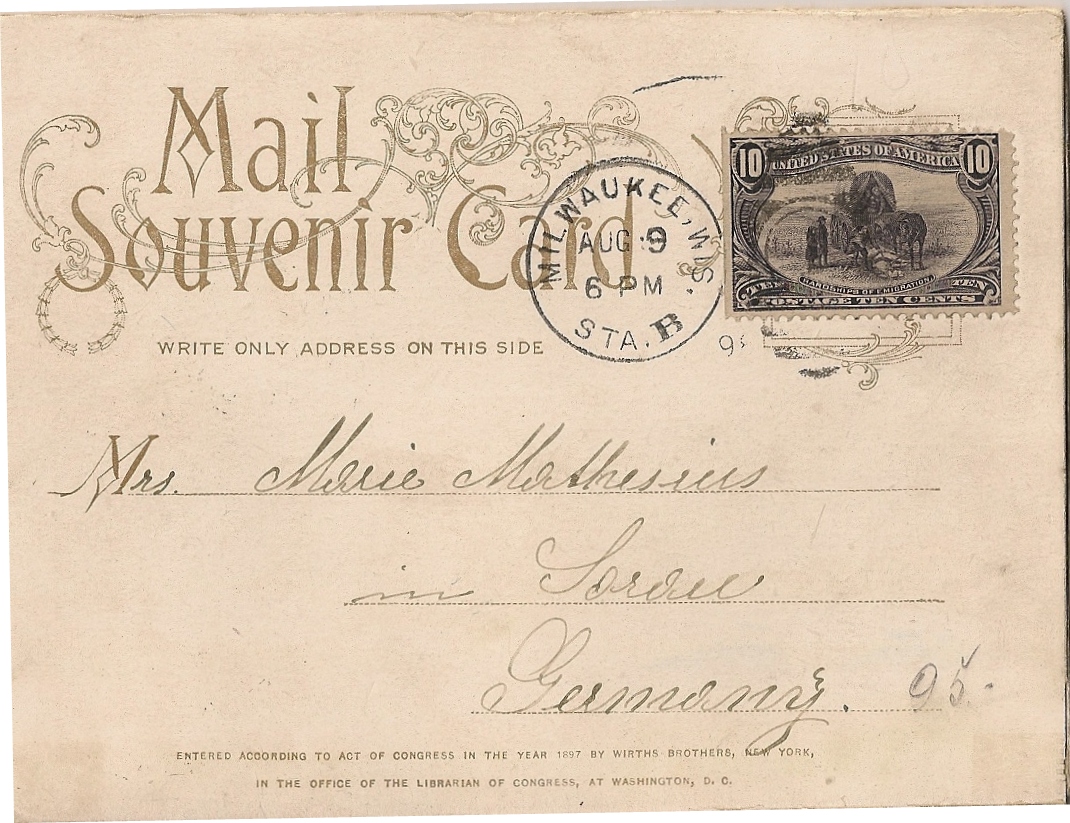
Example I have is from Camp Johnston, Florida. Cursive writing proclaims: These are field shoes. I wore out one pair all ready. Dean
Will review the WWI web site. Thank you.
Thanks very much Burt for this really interesting study about the WWI uniforms, including the head and footwear. Forty-four pounds of hot sweaty clothes would have been a lot. I love also reading about your living in a house that was built in 1639 in the Cotswolds. Fantastic!!
A lot of changes during World War I to try to reduce or prevent trench foot among soldiers. A very serious condition caused by prolong standing in wet, cold and unsanitary conditions
As a newspaper reader, I’ve seen notices of the deaths of the last Spanish-American War and World War I veterans, and realize it’s only a matter of time before the last World War II veteran also passes away.